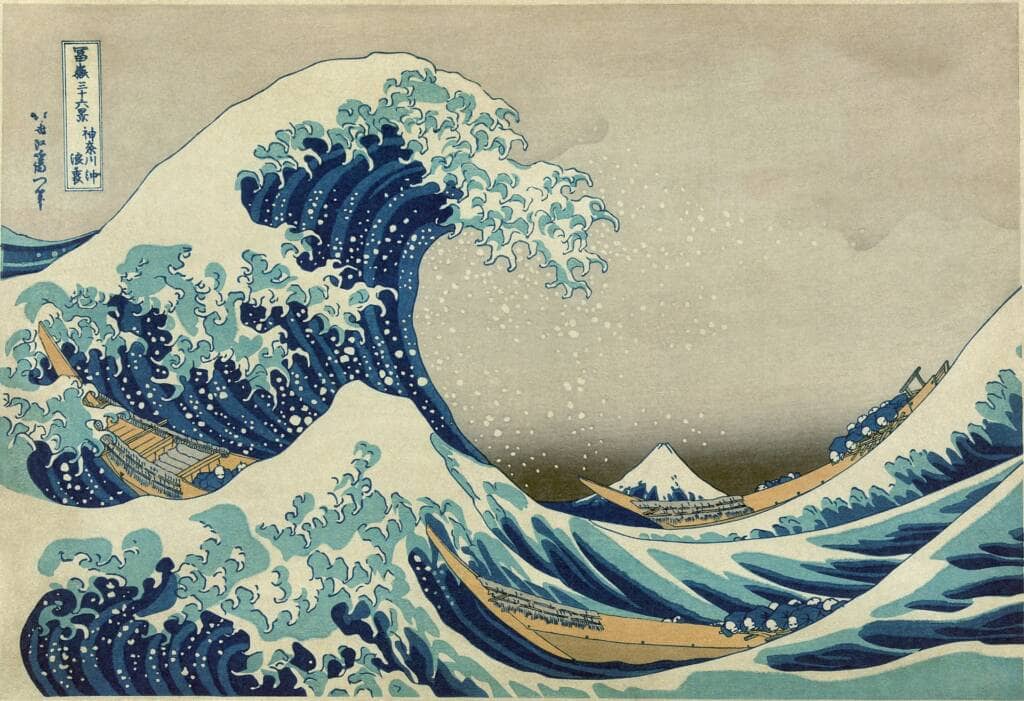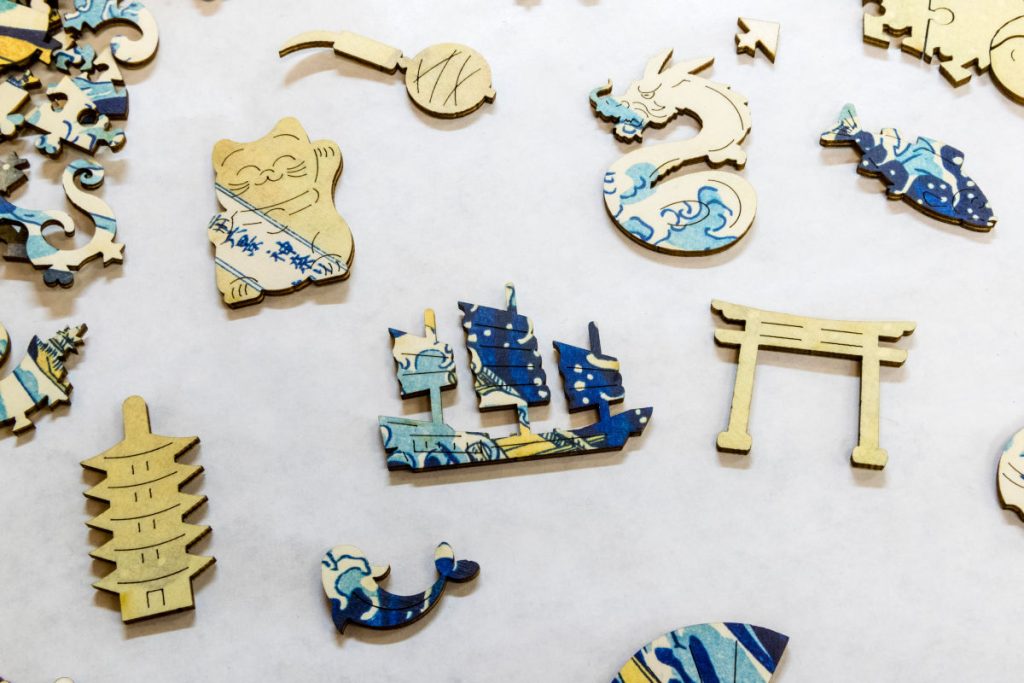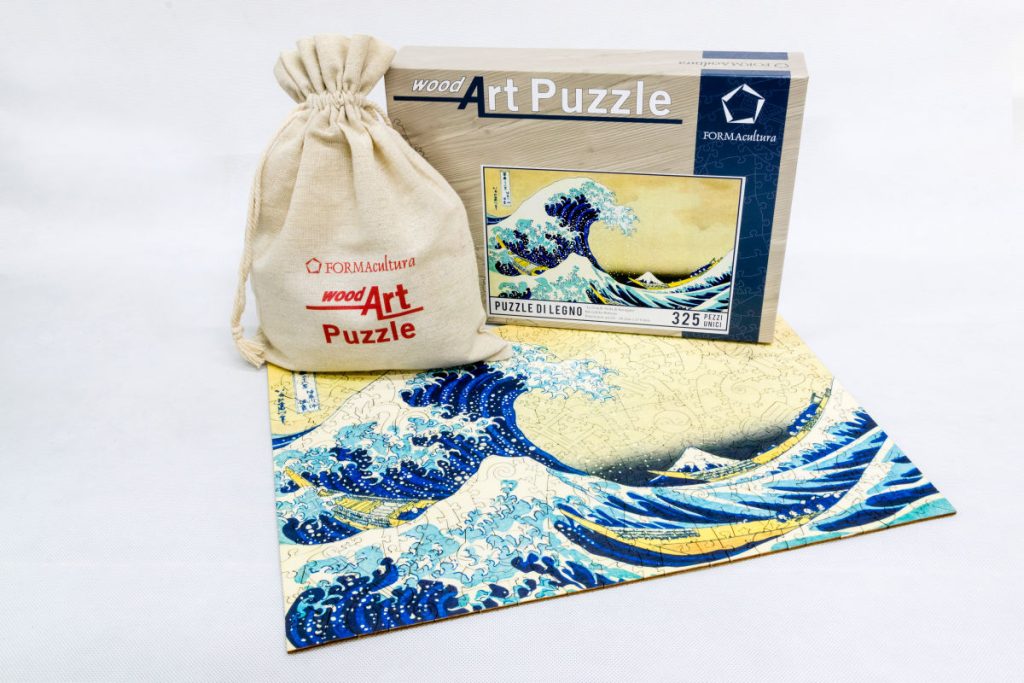The POP wave of Hokusai
The works of the Japanese artist Hokusaibecame famous in Europe in a rather bizarre way. The prints were in fact used as postcards sent from the exotic East or even used to wrap precious objects sent from Japan.
Many of the reproductions have been lost throughout history, but several copies still survive in good condition, produced when the printing blocks were in good condition. 93 / 5000 Risultati della traduzione It is possible to find some of these prints in various museums around the world including the Metropolitan Museum of Art of New York, the British Museum and the Victoria and Albert Museum of London, theArt Institute of Chicago, the National Gallery of Victoria of Melbourne, the Bibliothèque nationale de France of Paris, the Museo d’arte orientale of Torino.
The big wave of Kanagawa

Katsushika Hokusai, The big wave of Kanagawa
The Great Wave of Kanagawa is a ukiyo-e style woodcut (literally: “painting of a floating world”) first published between 1830 and 1831. It is the first and most famous work in the series entitled Thirty-six Views of Mount Fuji, as well as being the most famous of its kind and one of the best-known images in the world. The image has a very strong visual impact on the viewer. It almost looks like a frame from an animated film.
The Manga: from drawing manuals to comics
Hokusai’s innovative way of portraying reality anticipated what comic artists would do decades later.
This is also demonstrated by another work that opened the doors of the West to Hokusai: the collection of fifteen volumes of the Manga, literally “scattered sketches”.
These were actual drawing manuals which were supposed to provide amateur painters and craftsmen with a guide on how to draw the most diverse subjects in various positions.
The fifteen volumes draw fighters and warriors, grotesque and comic characters, flowers, birds, firearms, sketches of landscapes and details of temples and palaces in a whirlwind of images that seem to come to life on the page. From these sketches derives the use of the term “manga” to refer widely to Japanese comics.


The great popularity of Hokusai's art
What is extraordinary and revolutionary of Hokusai’s art is the reproducibility, which the Japanese artist reaches 130 years before Andy Warhol. Early on, as the Thirty-Six Views of Mount Fuji series proved to be a success, the printing of copies continued until the engraved blocks began to show considerable usury. At the time, a Hokusai print could be bought for the price of a plate of noodles.
With the success achieved with his prints, Hokusai also influenced the art of the greatest European artists from van Gogh to Gauguin, from Toulouse-Lautrec to Degas, contributing to the birth of Japonism in the second half of the nineteenth century. From the twentieth century onwards its popularity has grown again spreading a lot in mass culture and its Wave is still often copied and parodied today.
Our wooden puzzle with special tiles: a tribute to Japan


We too could not remain indifferent to the charm of the Great Wave. So we chose Hokusai and its iconic graphics for one of our wooden puzzles. Inspired by its art and its history, we created the puzzle of The Great Wave of Kanagawa by inserting special tiles that refer to Japan and its traditions, winking at the most widespread and recognizable stereotypes.

The Great Wave by Hokusai: our wooden puzzle and its packaging
Just as Japanese culture teaches care for things, we have made our puzzle with great attention to details: the material selected to be solid and durable, the precise cut of the pieces to ensure perfect fit, the original packaging with the bag of linen to protect the cards and the handcrafted wooden box. This and our other wooden puzzles are available in our shop.

